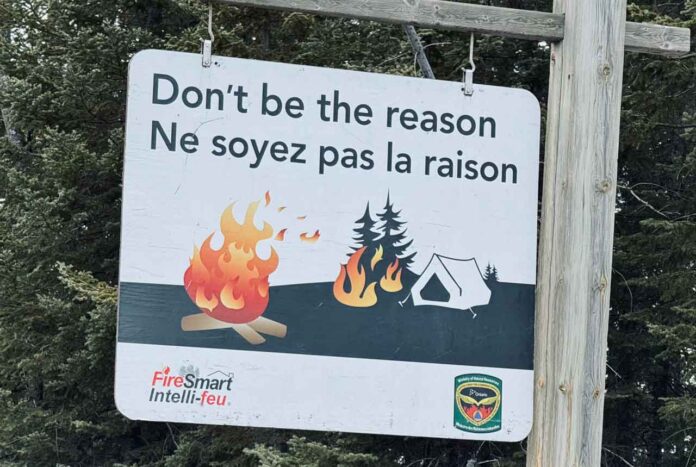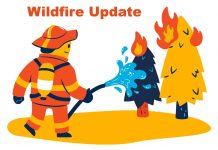THUNDER BAY – Wildfire Update – With the 2025 wildland fire season set to begin April 1, the Ontario government has announced increased resources and staffing to protect communities, infrastructure, and forested lands across the province — including the fire-prone regions of Northwestern Ontario.
This year, Ontario has added nearly 100 permanent positions to its wildfire response teams and is deploying new equipment and technologies to strengthen its fire suppression and emergency coordination capabilities.
“We are ready to protect people, communities and properties across Ontario from wildland fires,” said Mike Harris, Minister of Natural Resources. “Our brave FireRangers, pilots and support staff are prepared to battle fires and keep Ontarians safe.”
Major Investments Backing Up Readiness
Last year, the province partnered with the federal government to invest $64 million into the wildland fire program. These funds have been used to purchase upgraded fuel systems, fire trucks, and emergency management software, ensuring Ontario’s frontline teams are better equipped than ever for high-risk fire seasons.
Ontario’s wildfire infrastructure includes:
-
14 fire management headquarters
-
11 forward attack bases and three attack bases
-
Specialized aircraft, trained FireRangers, and a centralized emergency operations centre
-
90 million hectares of public land under wildfire protection jurisdiction
Human-Caused Fires Still a Major Risk
The province continues to emphasize public education and prevention, with human activity still responsible for about 50% of wildland fires. Ontarians are encouraged to check fire hazard maps at ontario.ca/forestfires, follow burn regulations, and properly extinguish campfires.
“Preparedness starts with individuals and communities,” said Jill Dunlop, Minister of Emergency Preparedness and Response. “We’re making sure First Nations, municipalities and emergency partners have the resources they need to keep families safe.”
Focus on the North: Thunder Bay and Beyond
In Northwestern Ontario — including communities such as Thunder Bay, Dryden, Sioux Lookout and Kenora — wildland fires continue to be a growing threat. Extended dry seasons and wind-driven fire events are becoming more common, increasing the need for coordinated response and early detection.
“These are all great steps, as wildfires are becoming more intense and unpredictable,” said Rob Grimwood, Deputy Fire Chief and President of the Ontario Association of Fire Chiefs. “Education, preparedness, and response measures need to adapt to protect Ontarians.”
Residents are encouraged to explore FireSmart programs to protect properties and improve resilience ahead of the season.
Past Wildfire Seasons in Ontario: A Growing Threat
As Ontario prepares for the 2025 fire season, recent years show a concerning trend of increasingly severe wildland fire activity.
🔥 2024 Fire Season Highlights
-
Fires: 470
-
Hectares burned: Nearly 90,000
-
Comparison: Below the 10-year average of 694 fires and 201,780 hectares burned
-
Notable Events: Multiple fires in Northwestern Ontario triggered evacuations in remote Indigenous communities, and thick smoke led to air quality warnings in Thunder Bay and beyond.
🔥 2023 Fire Season Recap
-
Fires: Over 700
-
Hectares burned: More than 160,000
-
Context: Dry spring and prolonged heatwaves contributed to one of the most aggressive seasons in the last decade.
🔥 2021–2022 Seasons
-
2021: Marked one of the worst seasons in Northern Ontario, with over 793 fires and approximately 793,000 hectares scorched — particularly devastating for communities near Red Lake, Dryden, and Sioux Lookout.
-
2022: Slight decline in activity but still saw above-average smoke days in Thunder Bay and Kenora.
Northwestern Ontario: On the Frontlines
Communities across the region—including Thunder Bay, Fort Frances, Geraldton, and Indigenous communities in the Far North—face mounting risk due to increasing fire frequency and intensity. Local fire crews, supported by inter-agency partnerships, have become key to mitigating impacts.






